Dotknij jej szyi i sprawdź, ile ma BPM
Touch her neck and check her BPM
Tomek Baran feat. Łukasz Podgórni
22.01.22 – 13.02.22

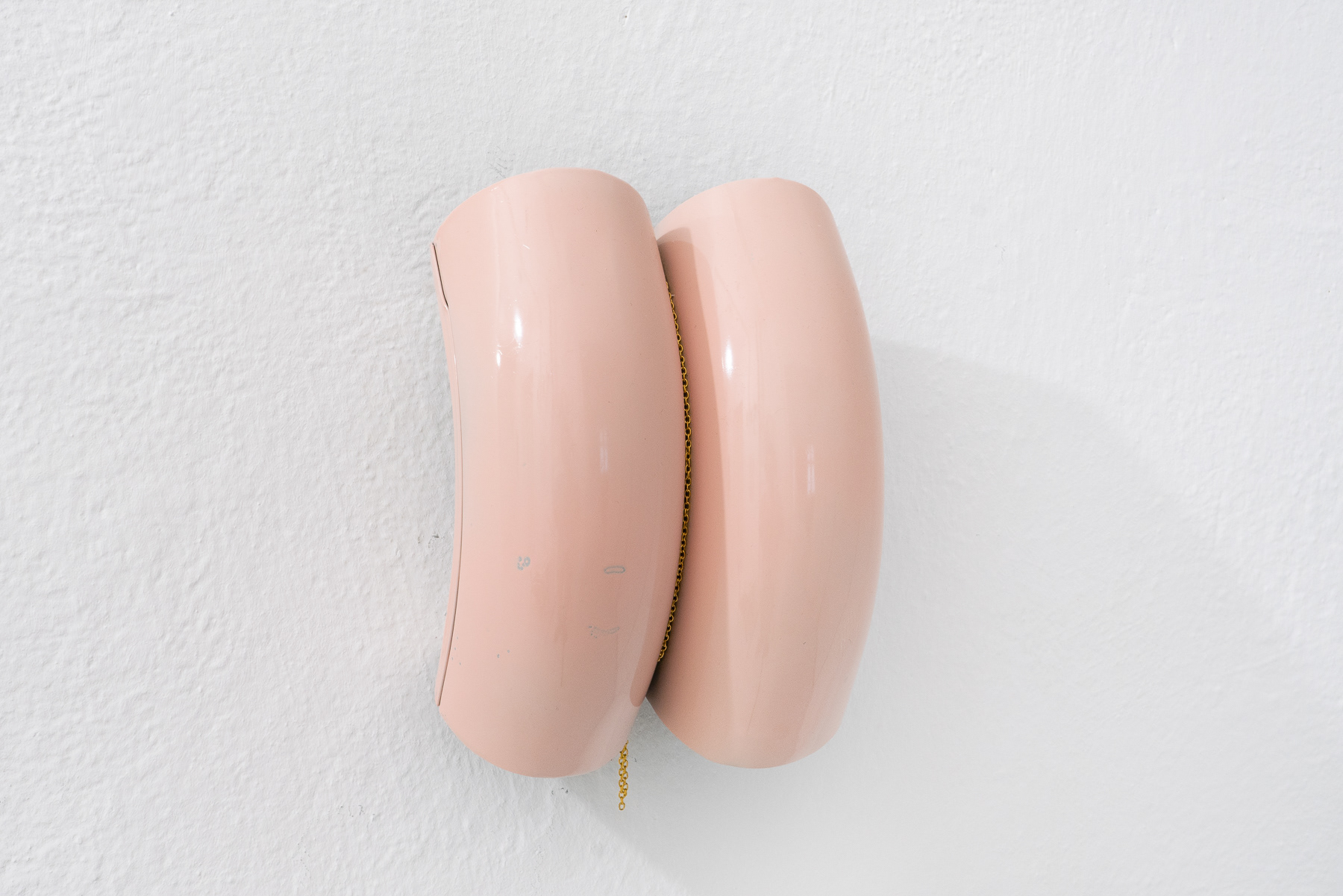
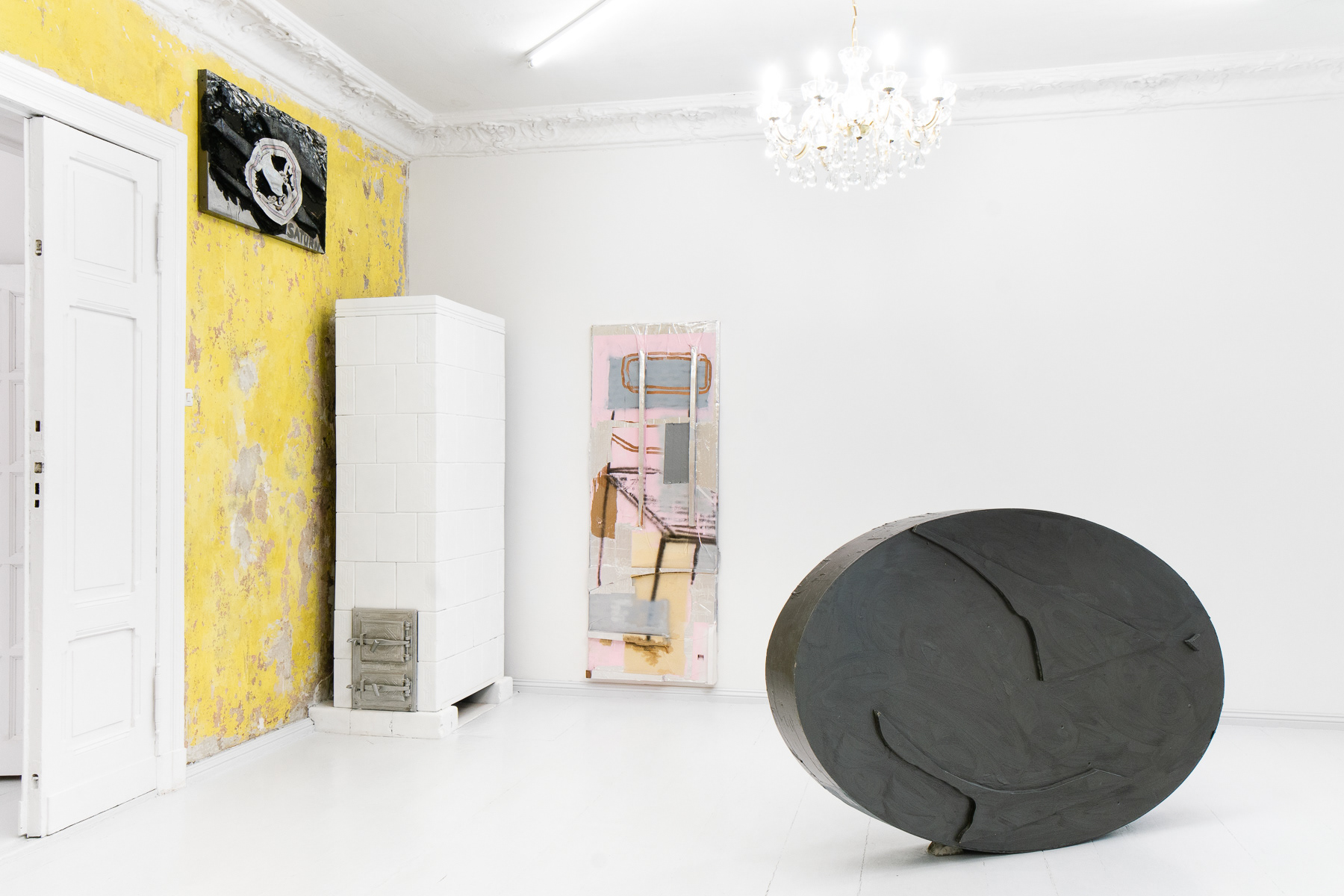
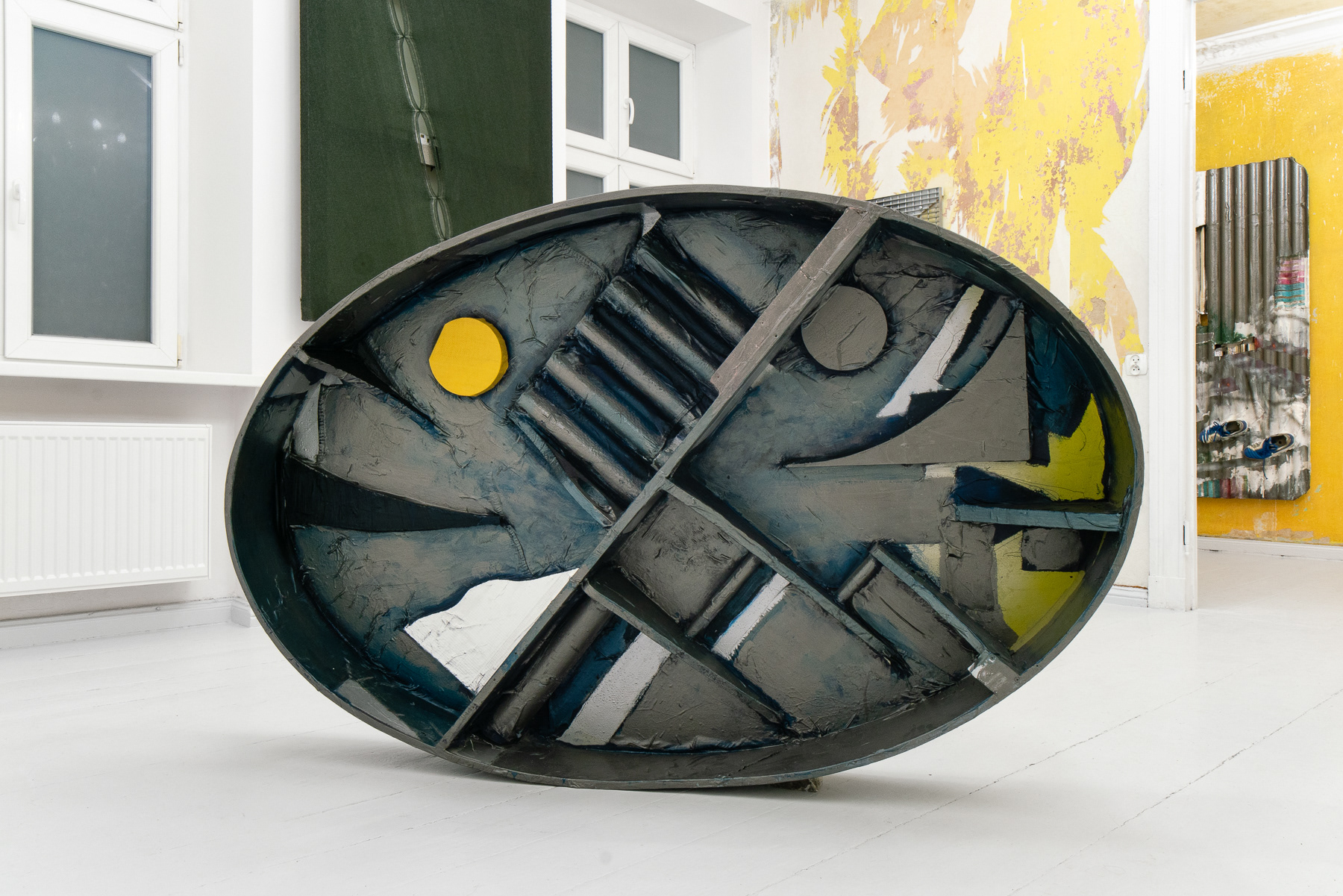
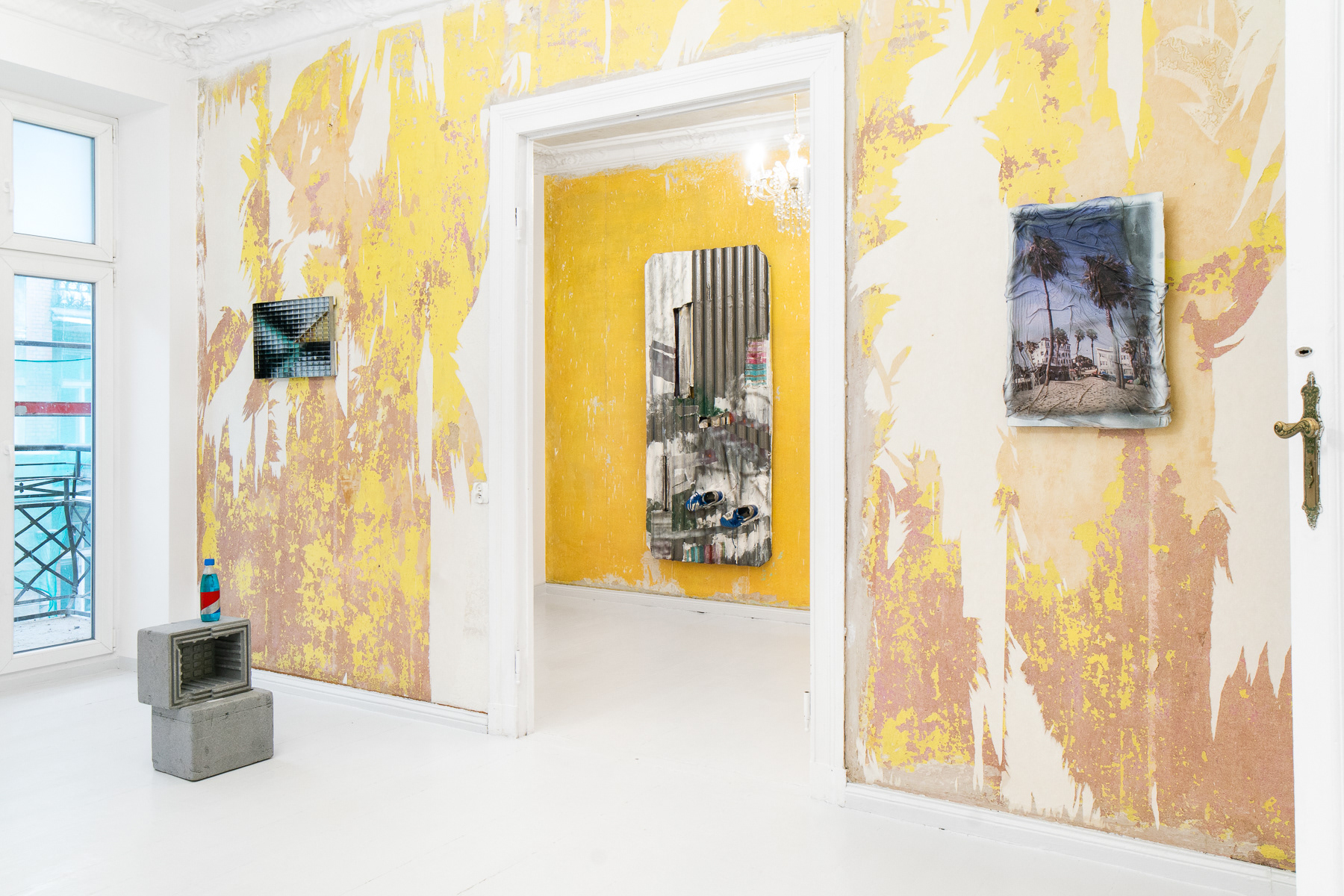
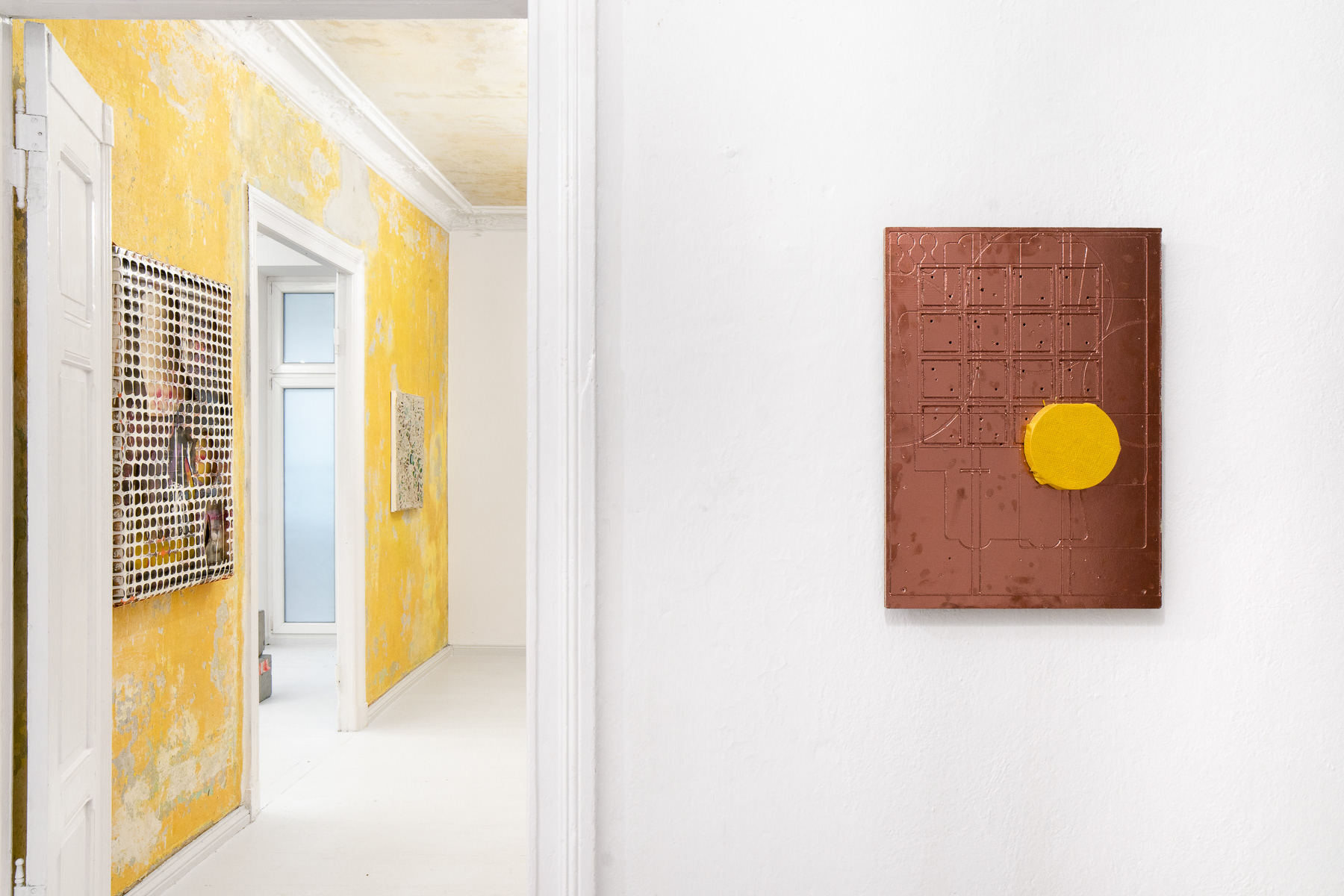
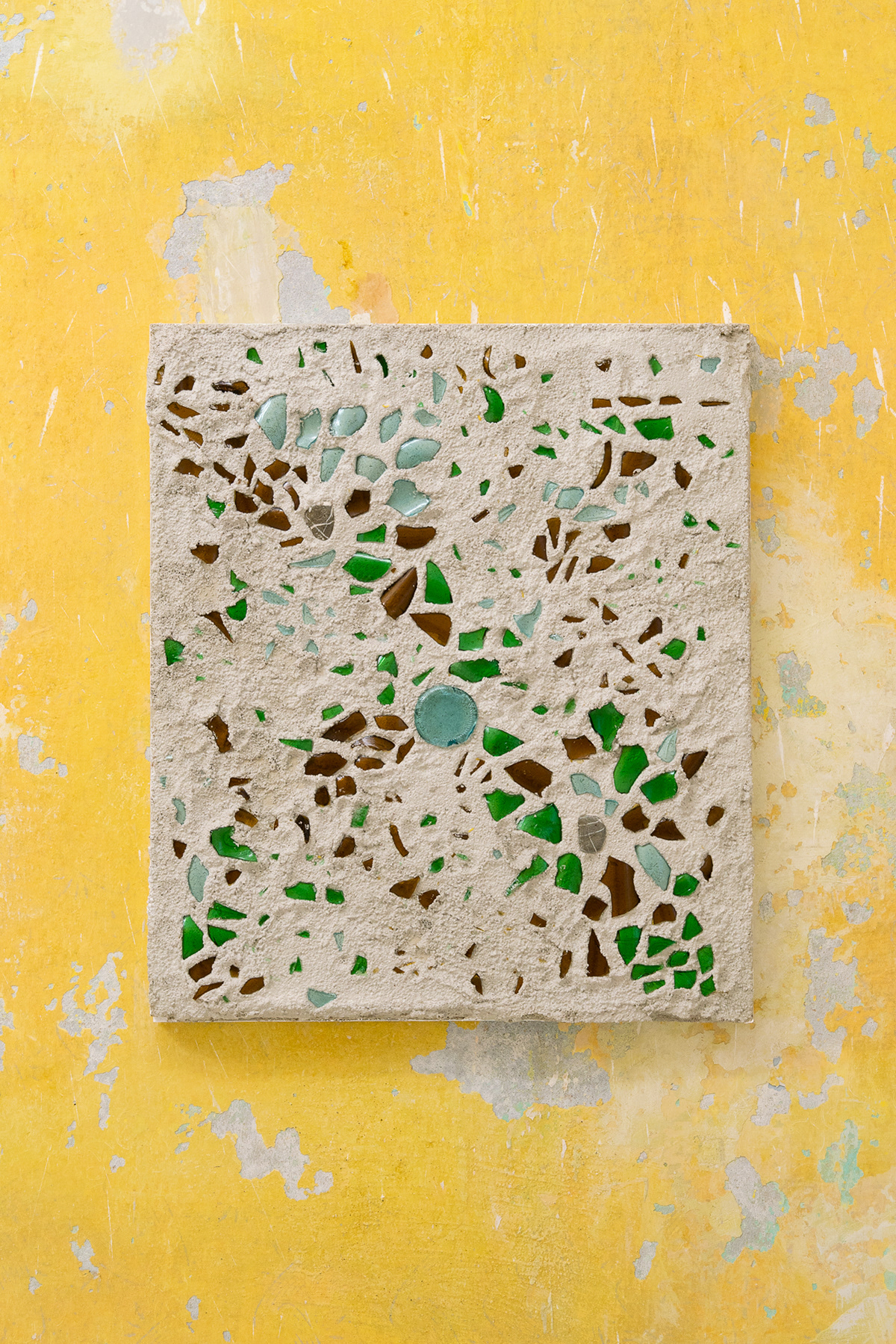
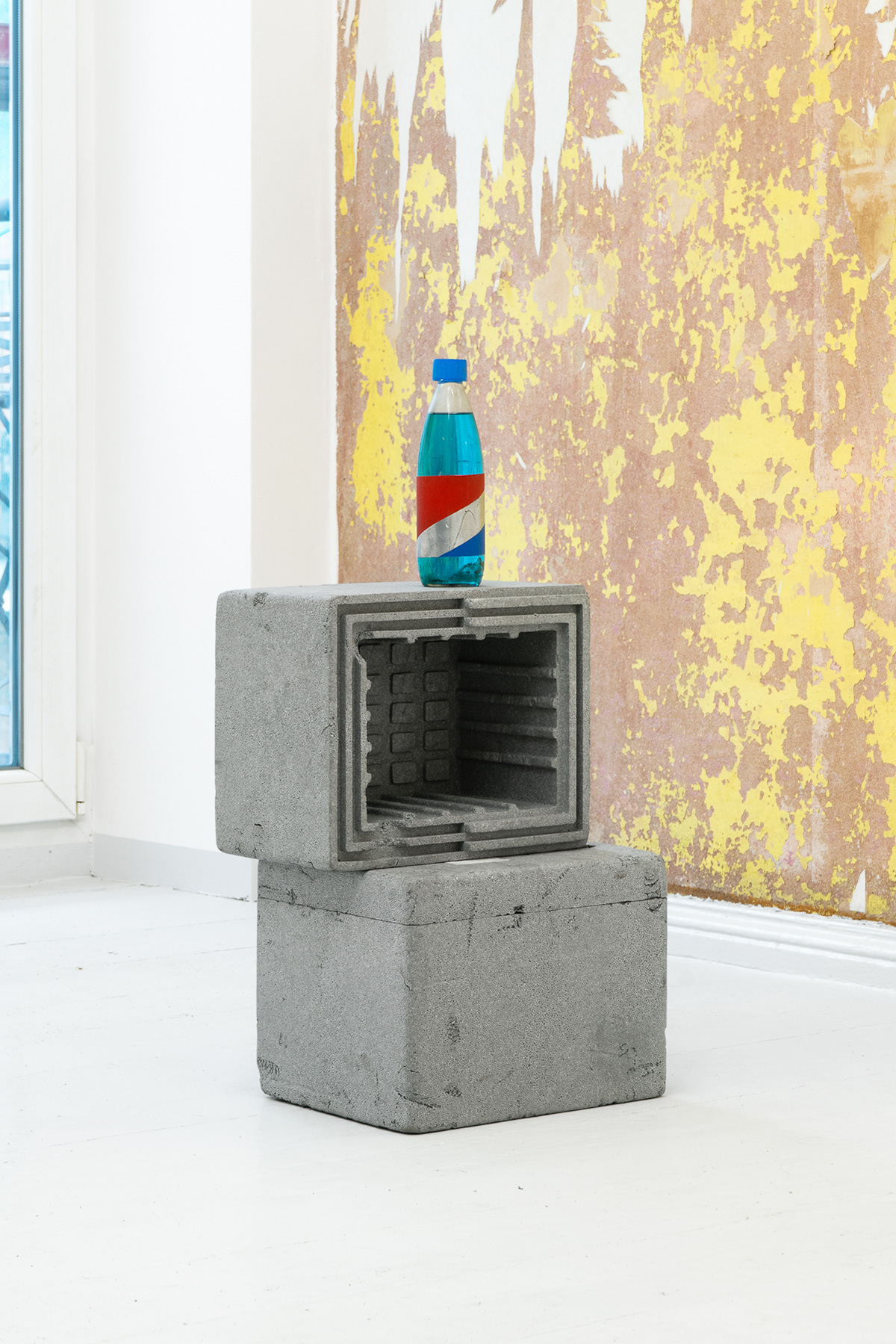
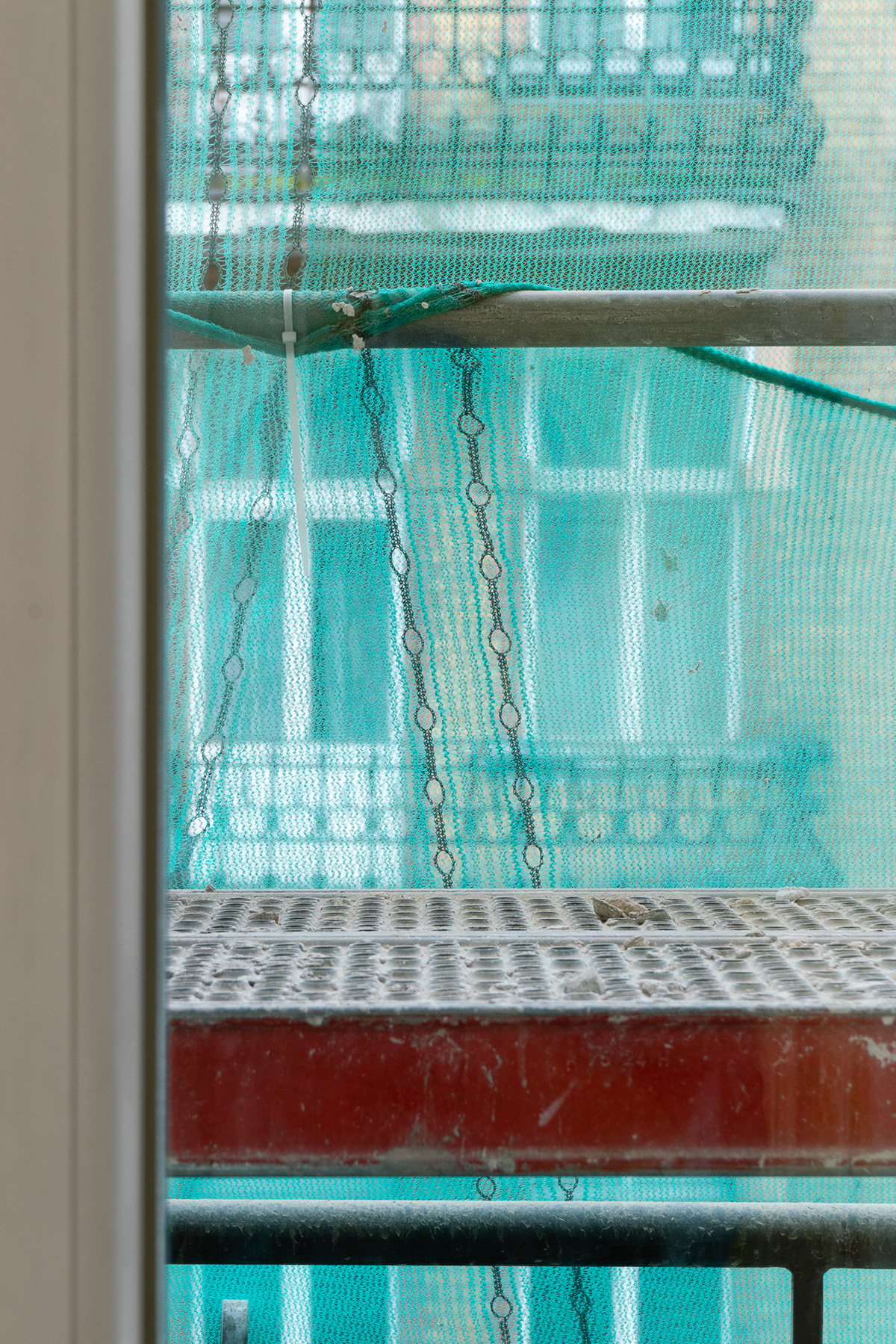
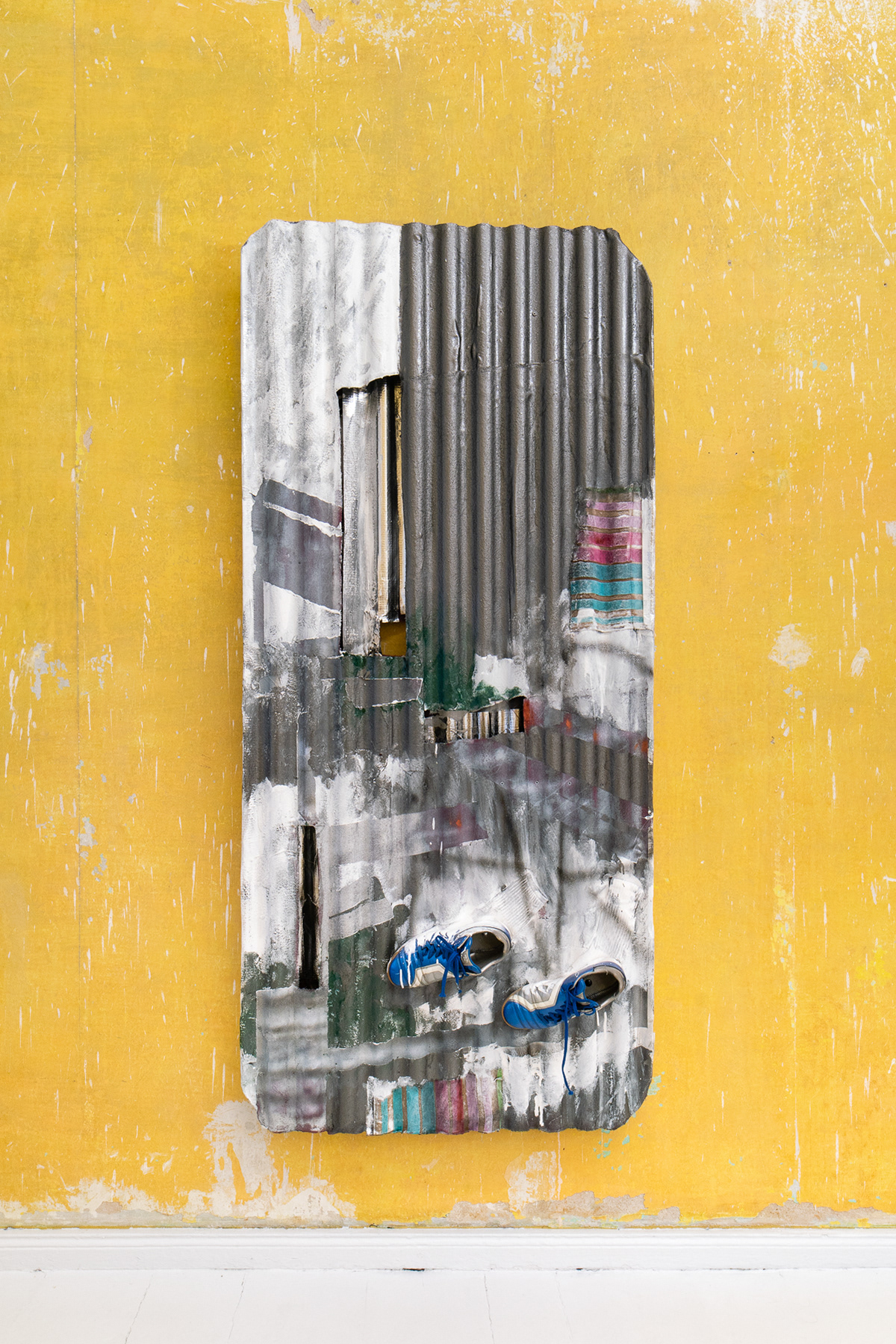
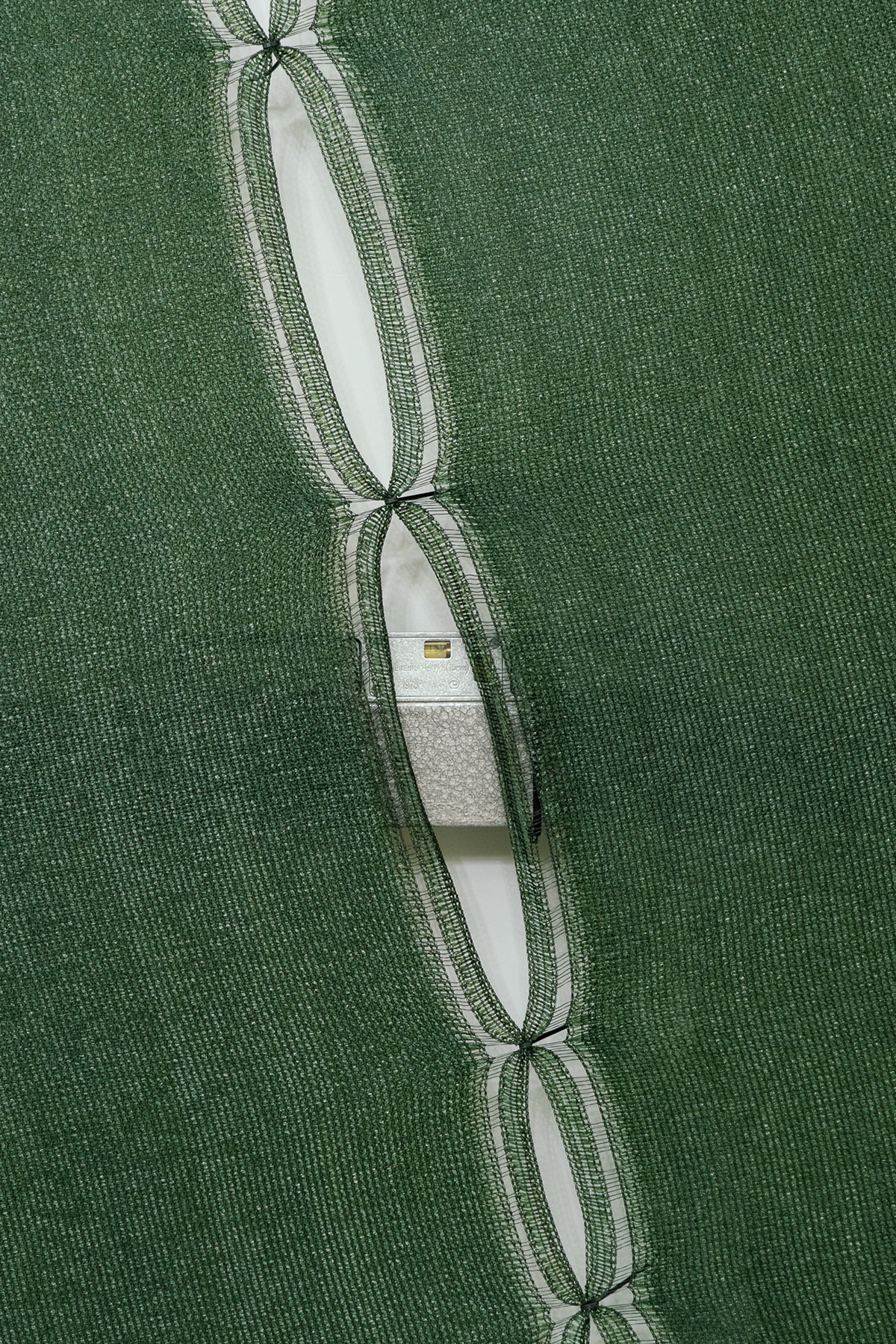



W mieście jedne domy są ładne, a inne takie sobie, na ciemnych podwórkach migdalą się zakochani, dzieci płaczą, że chcą do mam, a ja się zastanawiam, czy coś takiego już się kiedyś zdarzyło, pominąwszy Jezusa. Może ciągle się dzieje. Może wszędzie jacyś zagniewani umarli siedzą poukrywani w pokojach, poprzykrywani kocami, i rozstawiają po kątach swoich przerażonych, zakłopotanych krewnych. Bo niby skąd mielibyśmy o tym wiedzieć?
[George Saunders, Morszczyn (ze zbioru Sielanki), przekład Michał Kłobukowski]
W opowiadaniu Morszczyn George Saunders wciąga nas w groteskową i zarazem przejmującą sytuację, w której niespełniona za życia staruszka wstaje z grobu, by tym razem wydrzeć od losu wszystko, czego skrycie pragnęła – jednocześnie zarządzając gwałtowny plan naprawczy w mizernym życiu swoich bliskich.
Prace Tomka Barana – pozornie luźno sklecone, a w istocie misternie skonstruowane ze strzępów zwykłych rzeczy, materiałów budowlanych, a w końcu – użytych ponownie fragmentów starych obrazów – zdają się domagać podobnej uwagi. My, młodzi malarze, patrzymy na nie z przyjemnością, zastanawiając się przy tym, czego zażądałyby od nas wywoływane dziś duchy XX-wiecznych mocarzy formalizmu. Obserwując prace Tomka, wyczuwamy ich bit. Może nie takie zombie straszne, jak je malują?
Down in the city are the nice houses and the so-so houses and the lovers making out in dark yards and the babies crying for their moms, and I wonder if, other than Jesus, this has ever happened before. Maybe it happens all the time. Maybe there's angry dead all over, hiding in rooms, covered with blankets, bossing around their scared, embarrassed relatives. Because how would we know?
(George Saunders, Sea Oak)
In Sea Oak George Saunders draws us into a grotesque although thrilling story of a soft-hearted auntie who passes away unfulfilled, then suddenly gets up from her grave to finally get everything she secretly wanted from her life – at the same time managing a violent recovery plan in the miserable lives of her loved ones.
Tomek Baran's works – seemingly loosely assembled, but in fact intricately constructed from scraps of ordinary things, building materials, and finally – reused fragments of old paintings – seem to call for similar attention. We, young painters, look at them with pleasure, reflecting on what the spirits of the twentieth-century masters of formalism that we are evoking today would demand from us. Observing Tomek's works, we can feel their inner beat. Maybe the zombie isn’t so scary as it is painted?

